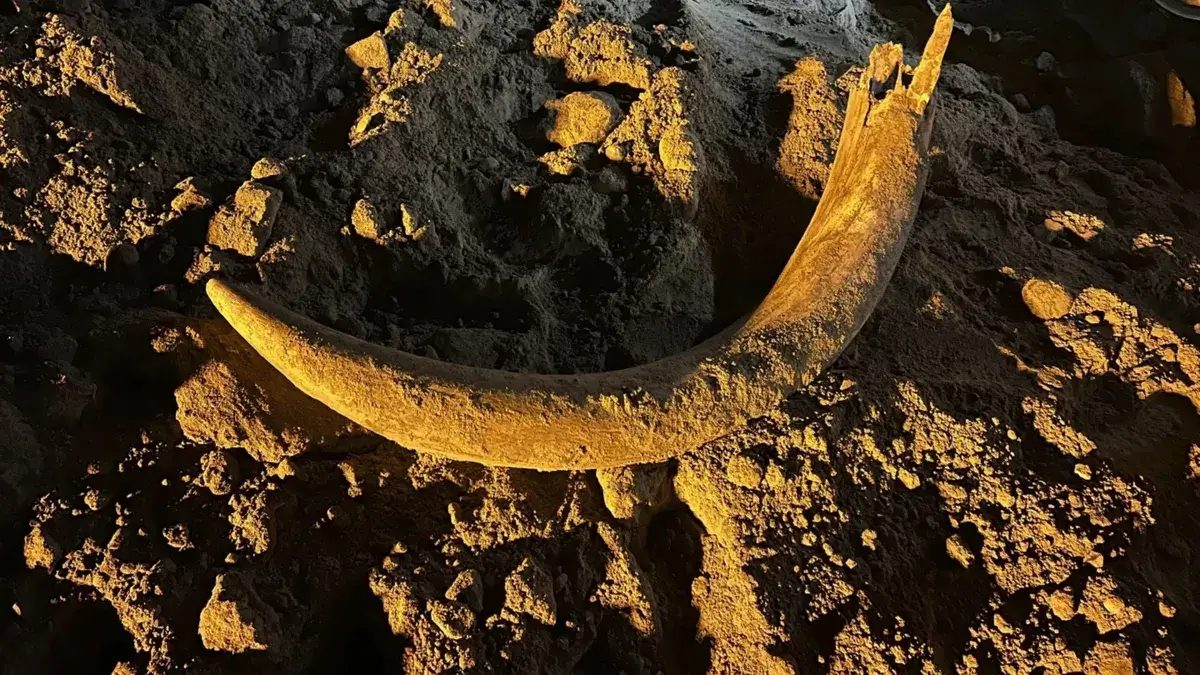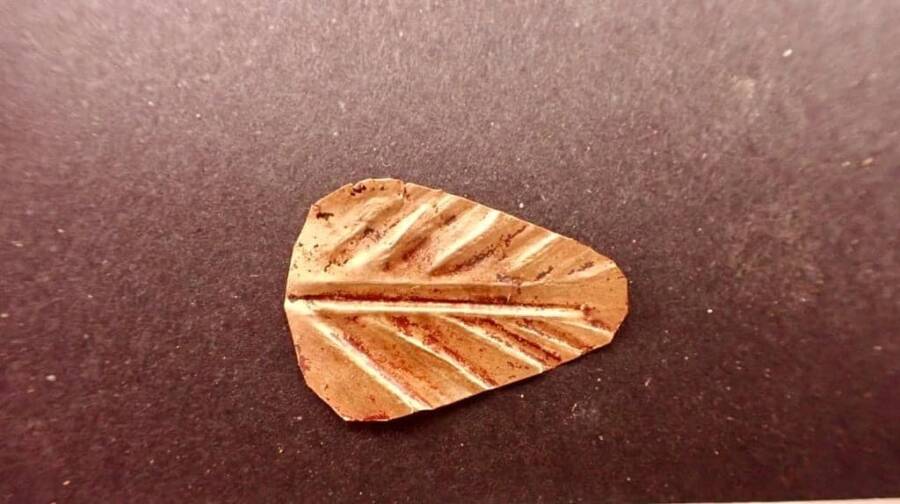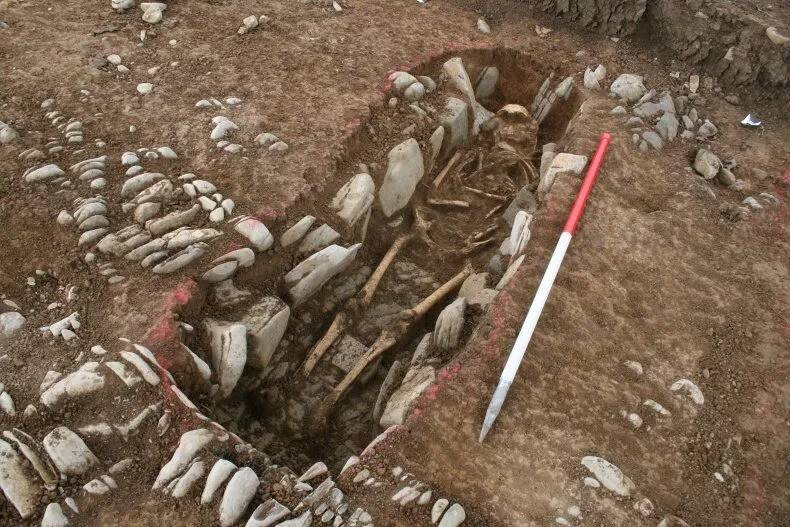Mammoth tusk discovered by coal miners in North Dakota, Egyptian mummies found entombed with golden tongues, a medieval cemetery where people had graveside feasts unearthed in Wales.
Coal Miners In North Dakota Stumble Upon Seven-Foot Mammoth Tusk, Leading To The Discovery Of 20 More Bones

North Dakota Department of Mineral ResourcesThe seven-foot-long mammoth tusk was found about 40 feet below ground.
Before the Ice Age, massive creatures known as mammoths roamed North America. These relatives of modern elephants went extinct in what is now North Dakota about 10,000 years ago. But because most of these creatures’ remains were destroyed by the movements of glaciers and ice sheets in the region, it’s incredibly rare to find mammoth fossils in North Dakota today.
Now, a team of coal miners has found a remarkably intact mammoth tusk near Beulah, North Dakota — and a subsequent excavation uncovered the most complete mammoth skeleton ever found in the state.
Read the full story behind this astonishing discovery here.
Two Golden Tongues Symbolizing The ‘Flesh Of The Gods’ Discovered In Ancient Egyptian Mummies

Egyptian Ministry of Tourism & AntiquitiesOne of the golden tongues discovered at the recent dig. In total, 16 have been found at Oxyrhynchus.
In the ancient Egyptian town of Oxyrhynchus, archaeologists just discovered two mummified bodies that were entombed with golden tongues more than 2,000 years ago. There have now been 16 such mummies found at the site in recent years.
Egyptians believed that placing a gold tongue in a mummy’s mouth gave the deceased the ability to talk to Osiris, the lord of the dead, in the afterlife. While the identity of the two mummies is unknown, it is clear that they were wealthy and important citizens, given the nature of their burial and their gilded tongues.
Read on here.
Unusual Medieval Cemetery Where People Once Feasted And Played Games Unearthed In Wales

Cardiff UniversityResearchers found about 80 graves at the cemetery which date to the sixth and seventh centuries.
When archaeologists descended on the grounds of Wales’ Fonmon Castle, they expected to find evidence of a prehistoric settlement. Instead, they uncovered a cemetery from the early Middle Ages rife with dozens of graves that paint a perplexing picture of medieval burial rites.
The archaeologists uncovered about 80 bodies that they believe date from the sixth and seventh centuries. Curiously, some of these remains were found in “crouched” positions instead of being laid flat on their backs. What’s more, researchers also found a number of objects amid the graves that suggest local people once flocked to the cemetery for ritual feasting and game-playing.
Dig deeper in this report.





